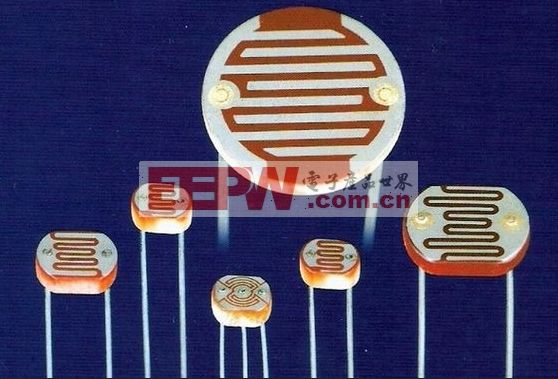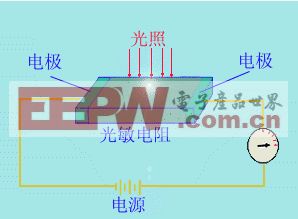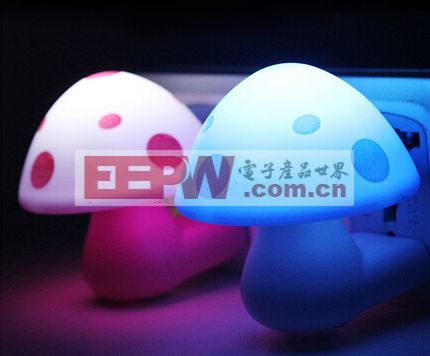Guide: Photosensitive resistors , as the name suggests, are light-sensitive resistors, and their resistance is directly related to the intensity of light. What kind of direct relationship is there? Let Xiaobian give you a detailed introduction to the working principle of the photoresistor !
1. Photosensitive resistor working principle - introduction
Photosensitive resistor, a special kind of resistor, referred to as photo resistor, also known as light pipe, which uses a photoconductor effect of semiconductor to make a resistor whose resistance value changes with the intensity of incident light, also known as photoconductivity. detector. Its resistance value is directly related to the intensity of light. When the light intensity increases, the resistance decreases. When the light intensity decreases, the resistance increases. This is because the carriers generated by the light are all involved in the conduction, and the drifting motion is caused by the applied electric field. The electrons rush to the positive pole of the power source, and the holes rush to the negative pole of the power source, so that the resistance of the photoresistor is rapidly decreased.

2. The working principle of the photoresistor
The working principle of the photoresistor is based on the internal photoelectric effect. When the photoresistor is exposed to light in a certain wavelength range, its resistance (bright resistance) is drastically reduced, and the current in the circuit is rapidly increased. Generally, it is desirable that the dark resistance is as large as possible, and the bright resistance is as small as possible, and the sensitivity of the photoresistor is high at this time. The actual resistance of the photoresistor is generally in the megaohm range, and the bright resistance is below a few thousand ohms.

The figure shows the principle structure of the photoresistor. It is a thin layer of semiconductor material coated on a glass substrate. The ends of the semiconductor are provided with metal electrodes. The metal electrodes are connected to the ends of the lead wires, and the photoresistors are connected to the circuit through the lead wires. In order to prevent the influence of the surrounding medium, the semiconductor photosensitive layer is covered with a paint film, and the composition of the paint film should be such that it has the highest transmittance in the most sensitive wavelength range of the photosensitive layer.
In the dark environment, its resistance is very high; when the photoresistor is illuminated and the light radiation energy is large enough, the electrons in the valence band absorb the photon energy and then transition to the conduction band, becoming free electrons, simultaneously generating holes, electrons. - The presence of a pair of holes reduces the resistivity. The stronger the light, the more photogenerated electron-hole pairs, the lower the resistance. When a voltage is applied across the photoresistor, the current flowing through the photoresistor increases as the illumination increases. When the incident light disappears, the electron-hole pair gradually recombines, the resistance gradually returns to the original value, and the current also gradually decreases.
3. Photosensitive resistor working principle - application
Photosensitive resistors are semiconductor photosensitive devices. In addition to high sensitivity, fast response, good spectral characteristics and good r-value consistency, they can maintain high stability and reliability under high temperature and humidity conditions. Used in cameras, solar garden lights, lawn lights, money detectors, quartz clocks, music cups, gift boxes, mini night lights, light sound control switches, street light automatic switches and various light control toys, light control lighting, lamps and other optical automatic switches Control field.

Pot friends, the working principle of the photoresistor is finished, here are a few photosensitizers for you.
Bi Directions Thyristor (Triac)
Bi Directions Thyristor (Triac) is equivalent to the antiparallel connection of two unidirectional thyristors, but only one control pole.
Bidirectional thyristors are made of N-P-N-P-N five-layer semiconductor materials, and three electrodes are also derived from the outside. Its structure is shown in the figure. Bi-directional thyristor volt-ampere characteristic curve Since the forward and reverse characteristics of the bidirectional thyristor are symmetrical, it can be turned on in any direction and is an ideal AC switching device.
Bi Directions Thyristor,Electronic Components Triac,Power Thyristor For Inverter,Silicon Power Bipolar Transistors
YANGZHOU POSITIONING TECH CO., LTD. , https://www.cnchipmicro.com